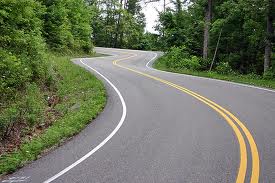Let’s admit it; running in the summer is South Carolina is brutal at best. Even the best intentions of running in daylight can leave you as dried out as a Thanksgiving turkey. Then there is this little thing called humidity. If you dare run early in the morning to beat the sun, you are faced with a different set of issues. You might as well wrap yourself in a wet blanket that has been baking at 350 for 20 minutes because that’s what you feel like after two minutes of running at nearly 90% humidity. You know it was a humid run when your fingers are as wrinkled as when you take a bath!
If your running distance, speed and form have suffered a bit over the summer, I totally understand. “Let’s see, do I stay in a nice cool house with a soft couch and cold beverage or do I go for a vertical swim in 90+ degree water?” If you chose the former you are not alone and no one will blame you.
However, hope springs eternal as fall is just around the corner. With cooler temps and less humidity, it’s time to get serious about your running again and get yourself in shape for the fall, winter and spring races and charity events. One quick way to improve your running is hill work. After all they are everywhere so we might as well use them to build character and strength!
Tackling hills can elevate your pace, both running up and down those monsters. According to Wendy Gilman and a study from Auckland University of Technology, uphill and downhill training helped runners shave their race times by 2 percent. That equates to more than two minutes off a one hour and fifty minute half marathon! The secret lies in improving leg strength.
The adage “no pain, no gain” was probably written by someone who did a lot of hill repeats, but they work. Jump start your running with these three hill-mastering tips from Darren De Reuck, the head of running for Boulder Coaching in Colorado.
Build more spring in your step. Twice a week do three sets of 10 squat jumps (squat down, then jump onto a bench a foot to two off the ground); two sets of 10 hamstring machine curls (5 reps per leg); two sets of 10 calf raises standing on both legs; then 10 reps of single-leg raises per leg.
Keep leaning. Uphill or down, lean slightly forward form your ankles, not your waist as you run. This will correct the common back-straining problem of leaning too far forward on the incline and too far back on the decline.
Keep it short. Shortening your stride and working on quicker turnover help conserve energy and can increase your pace. Short strides also reduce the strain placed on your quads and knees when going downhill. It’s important that your feet strike underneath your hips and not ahead or behind you.
So the next time you go for a run, seek out that monster hill and tackle it just like the little engine that could…I think I can, I think can, I think I can, I KNOW I can and I know you can to.


